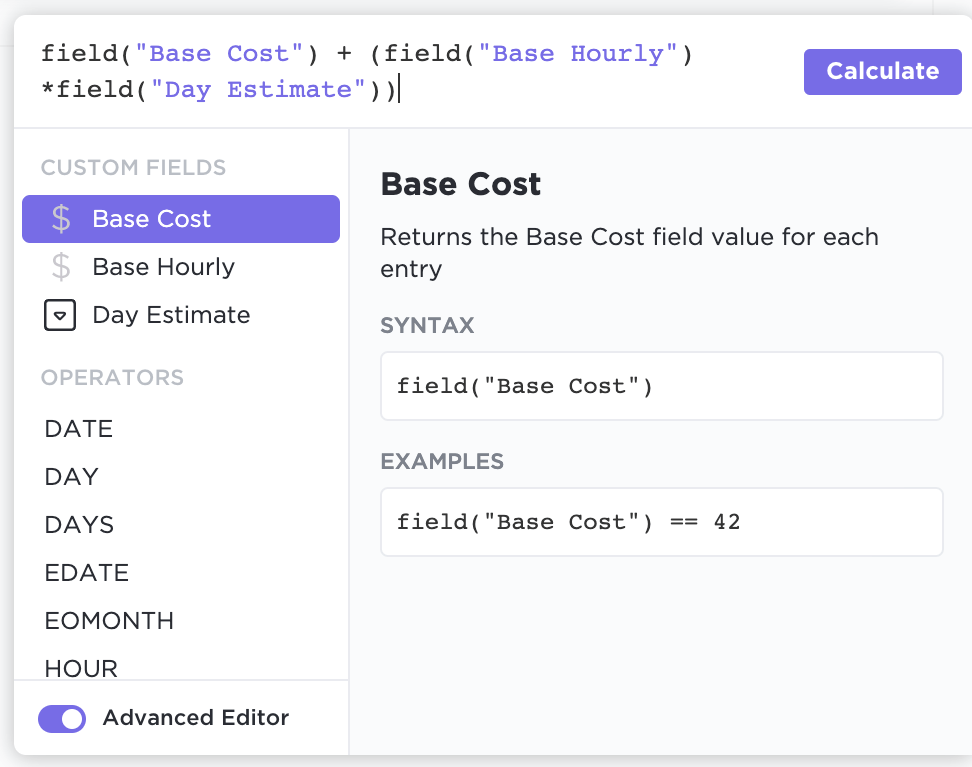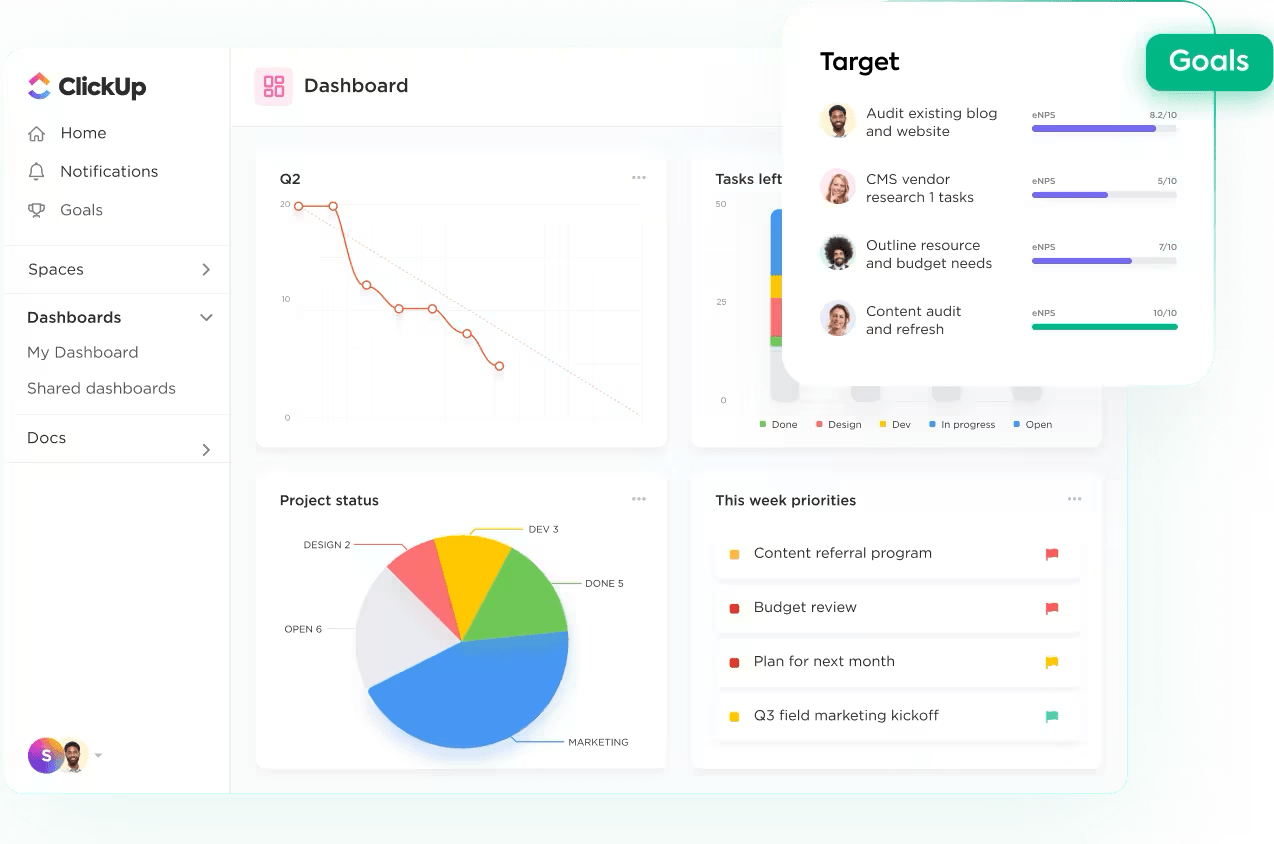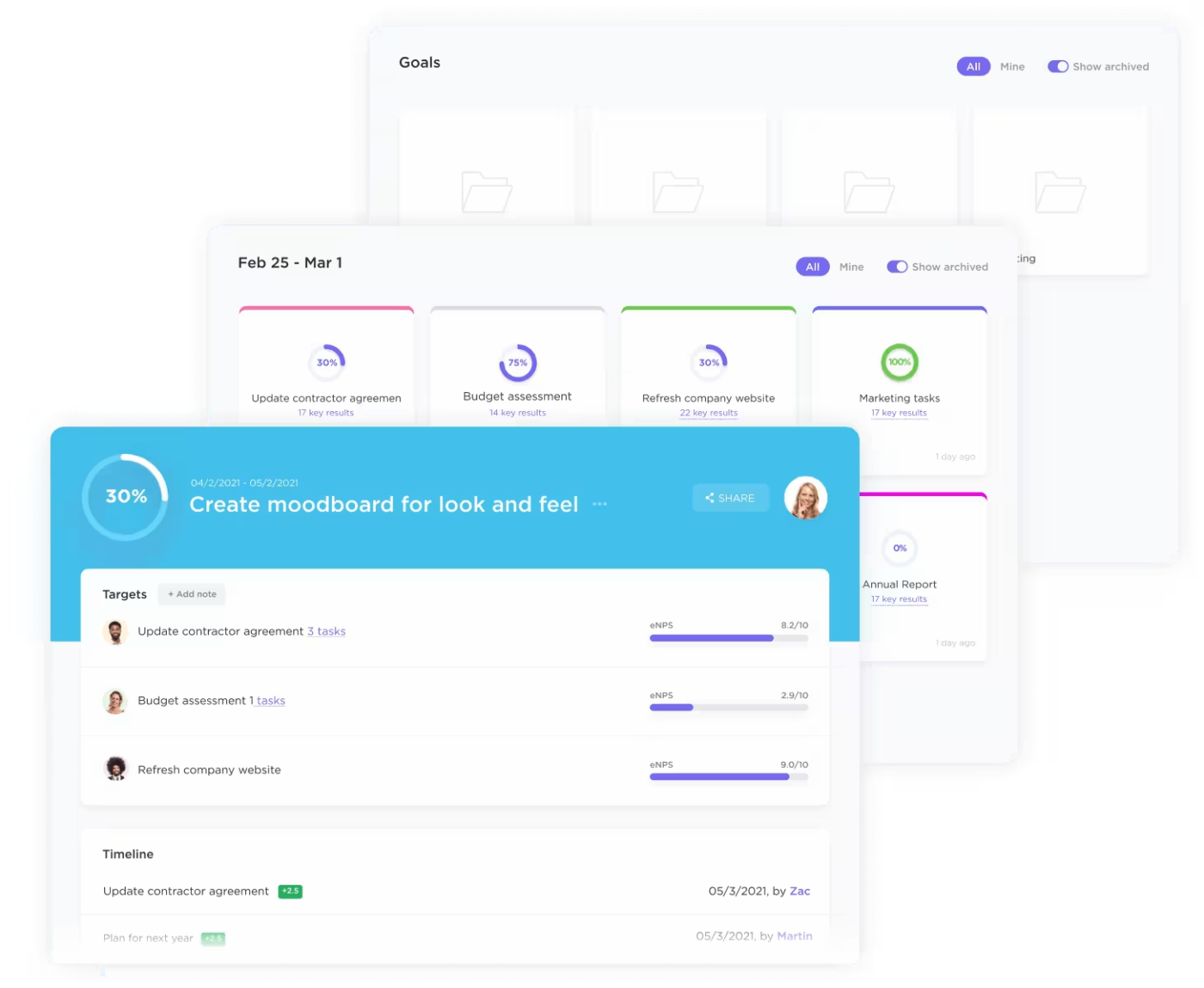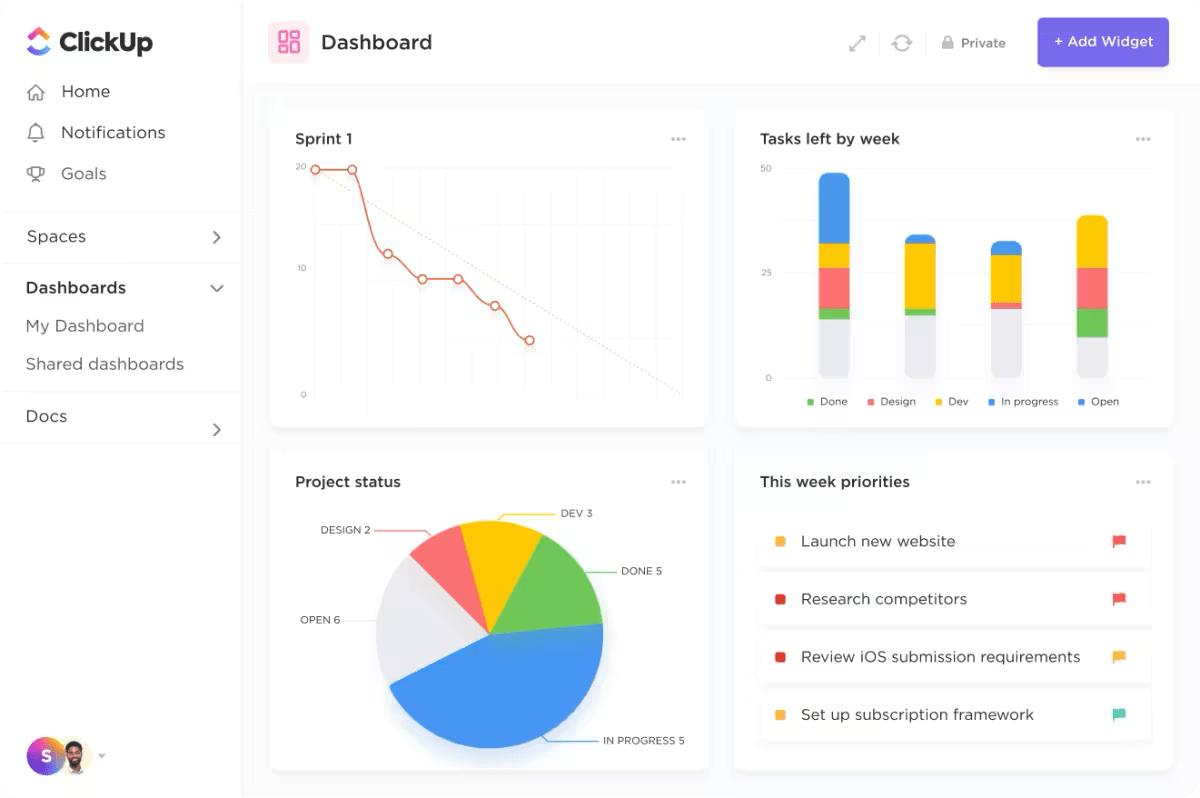

What’s your marketing budget?
And, how much sales has it resulted in?
The ratio of these two—total revenue and total marketing budget—is your marketing efficiency. For any marketer, business owner, or agency looking to optimize their dollar spend, the marketing efficiency ratio (MER) is a north star metric.
MER tells you clearly if your marketing activities are worth it. In this blog post, let’s see how.
- What is Marketing Efficiency Ratio (MER)?
- How to Calculate Your Team’s Marketing Efficiency Ratio
- Challenges That Negatively Impact the Marketing Efficiency Ratio
- Improving Marketing Efficiency Ratio
- MER in Marketing Strategy and Planning
- How to Optimize MER and Reach Your Marketing Goals
- Frequently Asked Questions About Marketing Efficiency Ratio
What is Marketing Efficiency Ratio (MER)?
Marketing efficiency ratio (MER) is the ratio of your total sales to your total marketing spend. The higher your MER, better your efficiency.
MER = Total revenue/total marketing spend
For instance, if you spent $120,000 on advertising and marketing and made $900,000 in sales, your MER is 900,000/120,000 = 7.5. This means that you are earning 7.5x revenue on your marketing spending.
If you think you already do ROI calculations, you’re right. Every marketing team calculates return on investment (ROI) on their spending in various ways.
- Return on Ad Spend (ROAS) measures the revenue generated for every dollar spent on ads
- Customer Lifetime Value (CLV) measures how much revenue is generated per customer over their entire lifetime buying from you
- SaaS companies use customer retention rate (CRR), which is the percentage of customers who stay with a business at the end of a given period
While all these are great metrics, they don’t measure the efficiency of marketing efforts in their totality. For instance, ROAS focuses on channel-wise and total ad spend. Customer lifetime value encompasses several years.
Marketing efficiency ratio answers a singular most critical question: Are all our marketing efforts together generating positive revenue?
Role of MER in Digital Marketing
Unlike traditional channels such as television or print advertising, digital marketing brought with it the ability to collect and analyze data to optimize results. You can get into the granular details of every headline or every vanity URL in your campaign.
This obsession with the details should also translate into understanding the overall impact of your efforts. While your social ad might perform best, how can we know that the remarketing search ads haven’t influenced the customer?
It is here that MER plays a crucial role.
360-degree view: Marketing efficiency ratio measures the performance of all marketing activities put together. This takes into account all the direct and indirect marketing efforts that went into that year.
Outcome-driven: Unlike cost-per-click, cost-per-lead, etc., which are just leading metrics, MER addresses the bottom line of the business. It paints a clear, unifying picture of marketing and sales KPIs for business leaders.
Business-focused: MER elevates marketing KPIs from customer acquisition/engagement to the dollar return on each marketing action. Marketing heads can say, “this is how much money we made,” which is far more convincing than, “this is how many people clicked on our search ad.”
Eliminates ‘attribution’ problems: Every marketing team has conflicts about attribution—SEO, search, social, and events all want to claim a lead/sale as theirs. In reality, no customer goes through a straight, short journey through one channel.
MER eliminates this conflict by focusing on overall efficiency instead of individual attributions. So, calculating MER is also much less complex. Let’s look at how we do it step by step.
How to Calculate Your Team’s Marketing Efficiency Ratio
MER has two elements: Revenue and spend. The precision of your MER calculation hinges on the completeness and accuracy of the data of these two. Begin there.
1. Add up your revenue
Revenue should encompass all earnings attributable to marketing, from direct sales figures to indirect revenue streams like increased brand awareness leading to sales.
However, if you had sales from direct referral to the CEO, it might not be attributable to marketing and therefore not included.
2. Add up your costs
On the expenditure side, consider every cost element related to marketing. While advertising spend is the easiest expense, carefully consider whether you want to include the salaries of the marketing team, the costs of tools, sponsorships, third-party services, etc.
3. Make the calculations
Now, divide total revenue by total spends. This is the simple part. For instance, if your total revenue is 800,000 and expenses are 500,000. Your MER is 800,000/500,000 = 1.6.

If you’re using a tool like ClickUp to manage your marketing projects, this calculation would be very easy right within the same window. With ClickUp’s advanced formula functions, you can make calculations as and when you need!
Is 1.6 a good enough MER? To answer that, you need context.
4. Analyze results
In theory, a higher MER indicates a more efficient marketing strategy, suggesting that your marketing efforts translate into significant revenue. Conversely, a lower MER could signal the need for a strategy reassessment.
However, what’s high and what’s low depends on several factors, such as:
Sales cycle: If your sales cycle is three months, then there is no meaning in calculating your MER every month—the efforts won’t correspond to sales during the same period.
Past performance: Have you increased your MER from the previous measurement period? If yes, you’re doing well.
Industry benchmarks: MER isn’t a universal metric to say 5 is good or 2 is bad. A number good in SaaS might not be good enough in e-commerce. So, understand the industry and geographical benchmarks.
One thing is for sure, though: If your MER is below 1, it means you’re spending more than you’re earning. This is good in most scenarios.
5. Get actionable insights
The analysis of MER isn’t just about acknowledging a high or low ratio but also understanding what these numbers signify for your business’s marketing health and efficiency. Use MER in combination with other metrics.
Use complementary metrics: Leverage ROAS and customer lifetime value for better context. MER gives the overall marketing efficiency, but ROAS gives you ROI for the advertising channel alone. You can optimize your spending by viewing ROAS as a metric that rolls up into your MER.
Consider contributing factors: Consider how different advertising campaigns and customer touchpoints affect MER. For instance, a social media campaign may yield higher revenue than a print ad. Customer touchpoints like a direct inquiry might convert to much higher conversions than casual website visits. Notice the outliers in your data. Accommodate for their deviations, too.
Drill down into details: Zoom into Cost per Action (CPA) and Cost per Mille (CPM) metrics. CPA is the cost of acquiring a customer who takes a specific action, such as making a purchase or signing up for a newsletter. CPM is the cost per thousand impressions.
Use MER as the bird’s eye view of your marketing efficiency and CPA/CPM as the granular details. If your CPA is high for a specific action—say signing up for a newsletter costs more than joining a webinar—optimize your marketing budget accordingly.
While MER is an excellent metric for various reasons, it isn’t without its challenges. Let’s see what they are and how to overcome them.
Challenges That Negatively Impact the Marketing Efficiency Ratio
The calculation and application of MER come with their unique set of challenges, such as the following.
Data quality: Inaccurate or incomplete data can severely skew your MER, leading to misguided decisions. For instance, overlooking indirect marketing dollars can paint a distorted picture of efficiency.
Scale of operations: MER is a high-level metric. This means that it needs to account for all marketing efforts and costs. In an organization that spends millions of dollars across dozens of marketing channels, critical information might fall through the cracks, impacting MER negatively.
Changing market dynamics: Factors such as seasonal fluctuations, economic shifts, and evolving consumer behaviors can all impact the effectiveness of a specific marketing campaign, rolling up to the MER.
Attribution models: The model you choose—such as first-click, last-click, or multi-touch—can impact MER. For instance, if first-click is your attribution model and your sales cycle is 12 months long, the results for your efforts will not appear in the current time period.
Short-term focus: MER is not right for weekly/monthly reviews. The overall efficiency of marketing efforts is not going to change daily. By focusing too much on short-term gains, teams can use MER in ways it isn’t meant to be.
Integrating offline efforts: MER combines all marketing efforts. However, not all marketing activities are created equal. For businesses that employ a mix of online and offline marketing strategies, not capturing the full spectrum of these efforts can affect the calculation of MER.
Despite these challenges, organizations can measure, track, and improve MER for better outcomes. Here’s how.
Improving Marketing Efficiency Ratio
The best way to improve the marketing efficiency ratio is to get down to the basics and strengthen every activity.
Improve customer engagement
An engaged customer is a buying customer. To improve MER, invest in improving customer engagement across channels. This could be creating social media content that keeps the customer interested or conducting educational webinars to build community.
Enhance customer lifetime value
MER is typically calculated for a specific period. For instance, to calculate MER for Q1 of 2024, you’ll divide total revenue from Jan-Mar 2024 by total marketing spend for the same period. You can measure MER over time by incorporating customer retention rates and revenue from retained customers.
Understand and apply best practices for using MER
Some of the commonly used best practices are:
- Building systems to track the entirety of marketing efforts and outcomes
- Gathering marketing-related data using tools for customer relationship management and project management
- Ensuring the accuracy of marketing data by assigning the responsibility to a marketing operations employee/team
- Using the right benchmarks to evaluate performance on MER
- Using the metric for a big picture view and not granular analysis
Using predictive analytics and A/B testing with MER
MER is a great metric is indicating the efficiency of your efforts, but it does precious little to help optimize your investments. For instance, MER is useless if you want to decide which channel to prioritize because it doesn’t account for attribution at all.
However, MER is a great way to design your marketing mix to improve overall outcomes. This is where predictive analytics and A/B testing can help significantly.
Predictive analytics for scenario planning: Let’s say your marketing mix consists of 30% search, 30% social media, and 40% partnerships. If this mix creates 4x MER, you can use predictive analytics to simulate scenarios with different combinations to optimize outcomes.
A/B testing: If you aren’t ready to invest big bucks in predictive analytics tools, try simple A/B testing. Use two different marketing mixes for two different periods and measure MER. Optimize based on which option delivers a higher MER.
Don’t forget traditional wisdom: The most effective marketing campaigns are those that move the prospect. Use personalization and relationship marketing to get closer to your audience. Test the impact of these campaigns on your MER and double down on the best ones, leveraging marketing automation tools.
Why bother if MER does not help leaders make specific decisions about budget allocation or channel effectiveness? Let’s find out.
MER in Marketing Strategy and Planning
The marketing effectiveness ratio is a strategic metric, not an operational one. It plays a crucial role in throwing light on the big picture. It offers a starting point from where marketing teams can zoom in on their problems or find opportunities for optimization.
Begin with the MER
Begin with the marketing efficiency ratio during your quarterly/yearly reviews or leadership meetings. Use it to show the direct impact of marketing on revenue.
Benchmark against your past marketing performance as well as industry standards. If you’re way off the benchmark, drill down and identify the root cause.
Use it to show growth
Especially in startups and small businesses, marketing plays a massive role in growing the business. Use MER to demonstrate growth—a slight improvement in MER can be a big increase in revenue.
For instance, your marketing spending was $100,000 last year, and your revenue was $400,000, so your MER is 4. This year, even a one-point increase in MER can lead to a $100,000 rise in revenue.
This can be especially impactful in measuring marketing agency productivity. The agency that delivers higher MER is clearly the better choice.
Plan your marketing vision
As a corollary, you can also plan for your marketing efforts based on your MER. Using the same example above, if your current MER is 4 and your marketing goal is $800,000 in revenue, you need a marketing budget of $200,000.
See it as a sum of its parts
Good MER needs every process to be efficient, including advertising, SEO, social media, partnerships, team performance, and more. Once you know your overall MER, zoom into the efficiency metrics of each of your factors/channels.
We’ve discussed all the big ideas and processes around MER. Before we end, let’s discuss some actions you can take today to optimize your marketing efficiency.
How to Optimize MER and Reach Your Marketing Goals
We’ve said time and again that to have reliable metrics, you need good quality data. Set up the foundations of that with a robust project management tool like ClickUp.
Consolidate your information
Consolidate all your marketing information, such as tasks, campaigns, goals, team members, and workload, to gain complete context. Typically, teams use various task management tools, CRMs, goal tracking apps, etc., for specific purposes. Consolidating all this information can get unwieldy.
A comprehensive tool like ClickUp’s workspace for marketing teams enables all this and more.

Several organizations also use ClickUp as their CRM, bringing customer relationship data for good measure.
Plan your marketing efforts
MER is impacted by two things: Your team’s productivity and ROI on marketing budgets. Track both right within ClickUp.

- Workload view is your marketing resource management software that allows you to see ongoing work, productivity, and availability
- Calendar view shows you the lifecycle of campaigns
- Project overview enables visibility into the statuses of all ongoing activities
If you don’t know where to start, use any of these marketing plan templates as your springboard.
Implement efficient marketing
Make your marketing practice efficient with a comprehensive project management tool. Agencies and marketing teams worldwide use ClickUp to create and execute efficient marketing campaigns.

- Break down your projects into workspaces, folders, tasks, sub-tasks to stay organized
- Assign users to tasks for better accountability. ClickUp’s tasks also have inbuilt chat functionality to enable teams to collaborate contextually
- Stay focussed on your objectives with ClickUp Goals. Track your progress to keep the team aligned on what’s important
- Eliminate busywork with marketing automation tools like ClickUp Automations
You can also write your creative briefs on ClickUp Docs and share them with your agencies and consultants as you like!
Stay on top of performance
Get real-time reporting on your marketing efficiency ratio with ClickUp Dashboard. Customize it to suit your needs. Click on the various elements on the dashboard to zoom into the reports.

Frequently Asked Questions About Marketing Efficiency Ratio
1. What is a good marketing efficiency ratio?
As a general rule of thumb, anything above three can be considered a good marketing efficiency ratio. However, this can vary significantly based on the organization’s size, location, industry, marketing budget, etc.
2. How is marketing efficiency calculated?
Marketing efficiency is calculated as a ratio of total revenue from marketing to total marketing expenses. Lower MER means that teams need to optimize marketing spend.
3. What is efficiency of marketing process?
Efficiency of the marketing process is the returns it can produce for every dollar invested. The primary goal of a marketing leader is to maximize efficiency to optimize revenue outcomes.
Better Your Marketing Outcomes with ClickUp
For any growing organization, marketing is one of the biggest expenses. Yet, the direct correlation between revenue and marketing spend is often ignored.
While marketing leaders focus on cost-per-click, cost-per-action, campaign performance, etc., they often miss out on the big picture, i.e., overall marketing effectiveness, because it’s a complex calculation.
It doesn’t have to be!
When you use ClickUp as the project management tool for your marketing initiatives, you organically collect the data needed to calculate MER. What’s more? You can use the advanced calculator to do your math or let the ClickUp Dashboard do it for you. Streamline your marketing and optimize your efficiency. Try ClickUp for free today.



